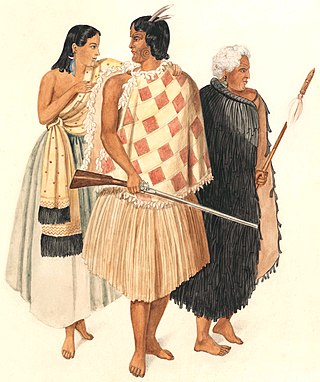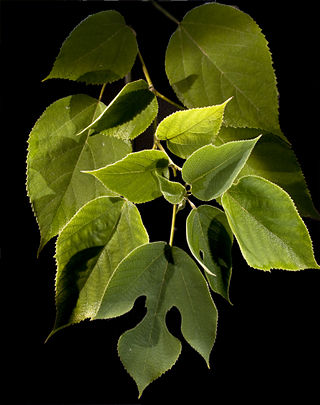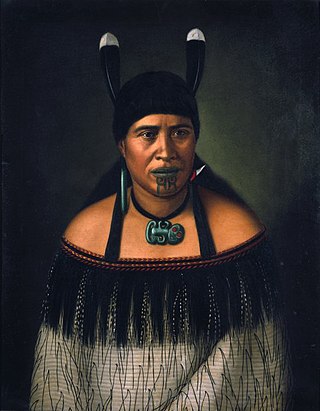
New Zealand flax describes the common New Zealand perennial plants Phormium tenax and Phormium colensoi, known by the Māori names harakeke and wharariki respectively. Although given the common name 'flax' they are quite distinct from the Northern Hemisphere plant known as flax .

The paper mulberry is a species of flowering plant in the family Moraceae. It is native to Asia, where its range includes Taiwan, China, Japan, Korea, Southeast Asia, Myanmar, and India. It is widely cultivated elsewhere and it grows as an introduced species in parts of Europe, the United States, and Africa. Other common names include tapa cloth tree.
The New Zealand and South Seas International Exhibition was a world's fair held in Dunedin, New Zealand from 17 November 1925 until 1 May 1926, which celebrated that country and the South Seas. It was the third such exhibition held in Dunedin, with earlier exhibitions in 1865 and 1889. The exhibition had over 3 million visitors. It had added a new 'Special Exhibits' section focusing on art and craftwork made by women. It was a breakthrough that lifted the profile of women's art and craftwork.
In the culture of the Māori of New Zealand, a tohunga is an expert practitioner of any skill or art, either religious or otherwise. Tohunga include expert priests, healers, navigators, carvers, builders, teachers and advisors. A tohunga may have also been the head of a whanau (family) but quite often was also a rangatira (chief) and an ariki (noble). The equivalent and cognate in Hawaiian culture is kahuna, tahu'a in Tahitian.

New Zealand art consists of the visual and plastic arts originating from New Zealand and comes from different traditions: indigenous Māori art and that brought here including from early European mostly British settlers.

Māori traditional textiles are the indigenous textiles of the Māori people of New Zealand. The organisation Te Roopu Raranga Whatu o Aotearoa, the national Māori weavers' collective, aims to preserve and foster the skills of making and using these materials.

Joseph Churchward was a Samoan-born New Zealand graphic designer and typographer. He is known for having designed an estimated 690 original typefaces, many of which are in use around the world. His designs were also used in the masthead of The Evening Post newspaper.

Phormium tenax is an evergreen perennial plant native to New Zealand and Norfolk Island that is an important fibre plant and a popular ornamental plant. The plant grows as a clump of long, straplike leaves, up to two metres long, from which arises a much taller flowering shoot, with dramatic yellow or red flowers.

Muka is prepared fibre of New Zealand flax. Prepared primarily by scraping, pounding and washing, it is a key material in Māori traditional textiles where it is usually used in tāniko or twined weaving. Some varieties produce different grades or quality of muka that result in characteristics such as stength, whiteness or shine.

Makea Takau Ariki (1839–1911) was a sovereign of the Cook Islands. She was the ariki (queen) of the dynasty Makea Nui, one of the three chiefdoms of the tribe Te Au O Tonga on the island of Rarotonga.
Te Maori was a watershed exhibition of Māori art in 1984. It is notable as the first occasion on which Māori art had been exhibited by Māori, and also the first occasion on which Māori art was shown internationally as art. In retrospect it is seen as a milestone in the Māori Renaissance.

Te Roopu Raranga Whatu o Aotearoa or Māori Weavers New Zealand is the New Zealand national Māori weavers’ collective, which aims to foster and preserve Māori traditional textiles. It has played an important role in facilitating the gathering of weavers of Māori and Pasifika descent to meet, teach and learn from one another.

Coprosma autumnalis or C. grandifolia according to earlier Colenso authority, is a native forest shrub of New Zealand. Its widespread in both the North and South Islands, and has the largest leaves of any New Zealand coprosma.

Ian Barry Brickell was a New Zealand potter, writer, conservationist and founder of Driving Creek Railway.
Zena Elva Mary Abbott was a New Zealand weaver. Her works are held at the Auckland War Memorial Museum and the Dowse Art Museum.
Emily Rangitiaria Schuster was a New Zealand master weaver of Te Arawa descent.

Kolokesa Uafā Māhina-Tuai is a Tongan curator and writer, whose work explores the role of craft in Tongan society. In the 2022 New Year Honours, Māhina-Tuai was appointed a Member of the New Zealand Order of Merit, for services to cultures and the arts.

Māngere Arts Centre - Ngā Tohu o Uenuku is an Auckland Council-owned and operated arts venue in the suburb of Māngere, in Auckland, New Zealand. The purpose-built facility was opened in 2010, and is considered by Auckland Council to be the home of Māori and Pacific visual art and performing arts in Auckland.
Joana Monolagi is a Fijian artist and masi maker, whose work is in the collection of Auckland Art Gallery. She was awarded the Pacific Heritage Art Award in 2015 at the Arts Pasifika Awards, recognising her work in supporting art and culture, her role as Fijian coordinator for the Pasifika Festival, and her own unique artistic practice. She is part of The Veiqia Project arts collective.
Foufili Halagigie is a Niuean artist in New Zealand, known for her woven handicrafts. She has been described as a "master weaver" and recognized for her work as part of the handicrafts group Falepipi he Mafola.














